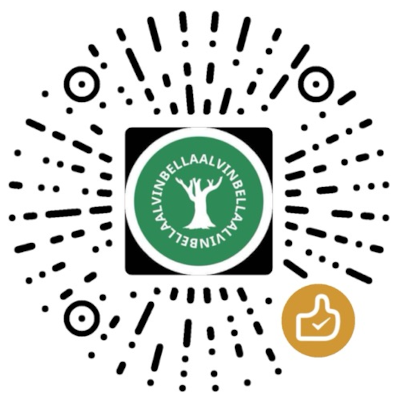Store

Git
Overview
Git is a free, open source distributed version control system (VCS) created by Linus Torvalds (founder of the Linux kernel) in 2005 to track and manage code changes. Git allows developers to efficiently manage project versions in local and remote repositories, and supports multi-person collaboration, branch management, code rollback, and history tracking. It is widely used in software development, document management, and open source communities, and is a core tool for modern development.
History and Development
Origin:
- In 2005, Linus Torvalds created Git due to a licensing dispute over BitKeeper, the version control tool for the Linux kernel, aiming to provide a fast and reliable open source alternative.
- Junio Hamano took over maintenance, and Git quickly became the official version control tool for the Linux kernel.
Development History:
- 2005-2008: Git 1.0 was released, introducing basic features (such as branching, merging, and committing).
- 2008: GitHub was founded to provide hosting services based on Git and promote the popularity of Git.
- 2010-2015: New features such as git stash (temporary changes) and git rebase (rewriting history) were added to improve flexibility.
- 2020-2025: Git 2.45 (the latest version in 2025) optimizes performance, supports SHA-256 hashes (improves security), and improves Windows and macOS compatibility.
- Community and support:
- Git is maintained by the open source community and hosted on Git SCM and GitHub.
- Support is provided by active forums (such as Stack Overflow) and X communities.
- Enterprise support comes from Atlassian (Bitbucket), GitLab, and GitHub.
- Open source license: Adopts the GNU General Public License (GPL), free to use, and allows customization.
Main features
Git is designed to be efficient, distributed and flexible, suitable for individual and team development. The following are its main features:
Distributed version control
- Distributed architecture:
- Each developer has a complete local copy of the repository, including all history records.
- Supports offline operations (such as committing, viewing history), without the need to connect to the server frequently.
- Difference from SVN:
- Centralized VCS (such as SVN) relies on a central server, and Git's distributed design is more flexible and suitable for remote work.
- Distributed architecture:
Branching and merging
- Branch management:
- Use git branch to create branches and isolate new feature development.
- Switch branches: git checkout or git switch.
- Merge:
- Use git merge to merge branches and resolve conflicts.
- Support git rebase to rewrite history and keep linear commit records.
- Branch management:
Efficient submission and history tracking
- Submission:
- Use git commit to record code changes and generate a unique SHA-1 hash (such as a1b2c3d).
- Support snapshot mechanism to quickly save project status.
- History tracking:
- Use git log to view submission history and git blame to track code authors.
- Support git diff to compare version differences.
- Submission:
Collaboration and remote warehouse
- Remote warehouse:
- Support GitHub, GitLab, Bitbucket and other platforms, push code: git push origin main.
- Pull updates: git pull origin main, support team collaboration.
- Pull Request (PR):
- Submit PR on GitHub to review code.
- Remote warehouse:
Flexible tools and ecology
- Command line and GUI:
- Provide CLI (such as git status) and GUI tools.
- Integrate into IDE (such as VS Code, PyCharm).
- Extended functions:
- Git Stash: temporarily store uncommitted changes (git stash push), suitable for switching tasks.
- Git Hooks: automated scripts.
- Submodules: manage dependent projects.
- Command line and GUI:
Advantages and limitations
Advantages
- Distributed design:
- Offline operation, suitable for mobile office.
- Improve fault tolerance, warehouse copies are scattered on developer devices.
- Efficient performance:
- Fast submission and branch operations, better than SVN.
- Suitable for managing large projects.
- Flexible branches:
- Lightweight branches support rapid experiments.
- Powerful merge and conflict resolution tools.
- Community and ecology:
- Platforms such as GitHub provide opportunities for collaboration and display. X post said that GitHub "is the LinkedIn of programmers".
- Rich tutorials and tool support.
- Cross-platform support:
- Compatible with Windows, Linux, macOS, suitable for your development environment.
Limitations
- Learning curve:
- Commands (such as git rebase, git cherry-pick) are complex for novices and need to be learned.
- Solution: Use GUI tools or refer to the official Git tutorial.
- Large file problem:
- Git is not suitable for managing large files.
- Solution: Use Git LFS (Large File Storage) to store large files.
- Conflict management:
- Multi-person collaboration may cause merge conflicts, which need to be resolved manually.
- Solution: Regularly pull updates (git pull) and use PR to review code.
- Complex history:
- Frequent branching and merging may cause historical confusion.
- Solution: Use git rebase or keep clear commit information.
- Dependence on remote platforms:
- Collaboration requires reliance on platforms such as GitHub, which may involve privacy issues.
- Solution: Build your own GitLab or use a VPS server.
Summary
Git is an efficient, distributed version control system that is widely used for code management, collaboration, and version tracking. Its distributed architecture, branch management, fast commits, and powerful ecosystem make it an ideal tool for software development. Compared with SVN, Git is more flexible and suitable for modern development. Compared with Mercurial, Git has a larger community.


 Notepad++
Notepad++
 Geany
Geany
 Vim
Vim
 Visual Studio Code
Visual Studio Code
 Eclipse
Eclipse





